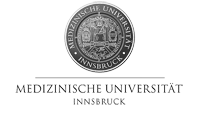|
|
 |
1Department of Paediatrics, 2Department of Medical Biology, 3Department of Biostatistics, Safarik University, Kosice, Slovakia
Aim: To characterize the distribution of angiotensin-converting enzyme (ACE), angiotensinogen (ATG) and angiotensin type 1 receptor (AT1R) genotypes in children with congenital uropathies (CU) and to determine the relation of genetic factors to clinical outcome of these children.
Patients and methods: Study group included 165 children with different CU – 43 children with vesicoureteric reflux, 94 with obstructive uropathies and 28 with kidney hypo/dysplasia. Glomerular filtration rate (GFR) calculated according to Schwartz formula (ΔGFR) was evaluated at baseline and after 5 years of follow up. I/D polymorphism of the ACE gene, M235T polymorphism of the ATG gene and A1166C polymorphism of the AT1R gene were determined by PCR method. Distribution of these genotypes was compared with group of 189 healthy children.
Results: There was no significant difference in genotype or allele frequencies of ACE, ATG and AT1R between whole CU group and healthy controls. Significantly higher presence of MT (frequency 16, OR 0,44, CI 95% 0,2-0,97, p=0,02 Fischer exact test) and TT genotypes (frequency 7, OR 3,13, CI 95% 0,97-9,12, p=0,02) of the ATG gene was found in subgroup of Gypsies in comparison to Caucasian children with CU. GFR < 80 ml/min/1,73m2 was noticed in 40 (24%) patients after 5 years of follow up. Although we have not proved significant differences between progressive and non-progressive groups of children with CU, deviation from Hardy-Weinberg equilibrium was found in group of children with normal GFR for MM, MT and TT genotypes of ATG gene (p<0,05, χ2 test).
Conclusion: Genetic factors are not related neither to the development nor to the prognosis of congenital anomalies of uropoetic tract in our study group.
Supported by Research Project VEGA 1/1178/04
